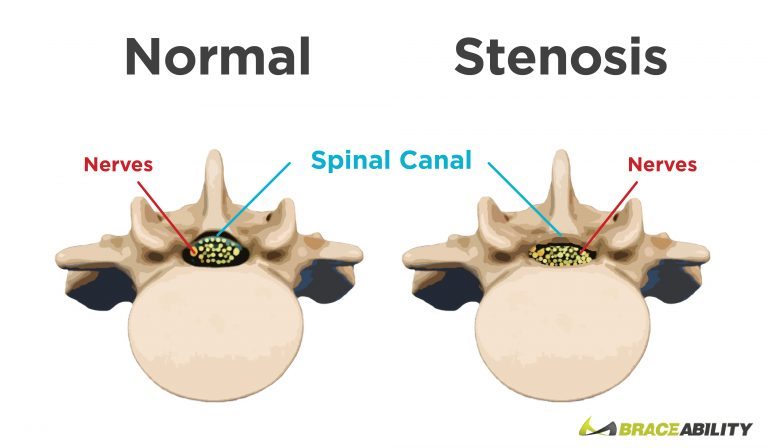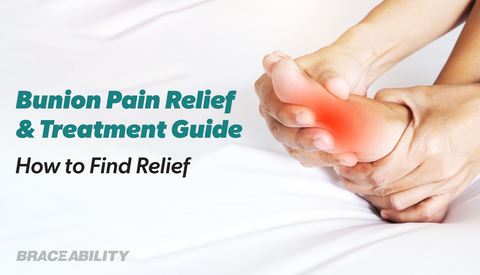What Is Cervical Spinal Stenosis of the Neck?
 Cervical spine stenosis differentiates itself from other types of stenosis (e.g., lumbar spinal stenosis) obviously because it is in the neck region compared to the other back areas. But that isn’t the only thing that differentiates cervical spinal stenosis. Damaging this region can be problematic since it impacts the many vital nerves that make up the spinal cord, which connects the brain to the rest of the body.
Cervical spine stenosis differentiates itself from other types of stenosis (e.g., lumbar spinal stenosis) obviously because it is in the neck region compared to the other back areas. But that isn’t the only thing that differentiates cervical spinal stenosis. Damaging this region can be problematic since it impacts the many vital nerves that make up the spinal cord, which connects the brain to the rest of the body.
As is true of other forms of spinal stenosis, this condition refers to a narrowing of the spaces within the spine, which can put pressure on the spinal nerves and/or the spinal cord.
Cervical Spinal Stenosis Symptoms
Compression of the nerve roots where they exit the bony spinal cord or irritation of the spinal cord itself can cause a number of unpleasant or even serious symptoms.
These symptoms of cervical spinal stenosis typically include neck pain and even a tingling, numbing, burning or prickling sensation in the back, shoulders, arms or hands.
In instances of severe cervical spinal stenosis, where the spinal cord is affected, symptoms might include:
- Weakness in the arms and/or legs
- Spastic reflexes and movement
- Altered sensation
- Incontinence
- Bladder or bowel function changes
What Causes Spinal Stenosis of the Neck?
 In many instances, stenosis of the cervical spine is related to degenerative changes with the spine over time. This might cause bone spurs or a herniated disc, for instance, that narrow space in the spinal canal and possibly press on the spinal cord or nerve roots. The ligaments of the spine can also thicken and stiffen with age, possibly bulging into the spinal canal. Other possible causes of cervical spinal canal stenosis include:
In many instances, stenosis of the cervical spine is related to degenerative changes with the spine over time. This might cause bone spurs or a herniated disc, for instance, that narrow space in the spinal canal and possibly press on the spinal cord or nerve roots. The ligaments of the spine can also thicken and stiffen with age, possibly bulging into the spinal canal. Other possible causes of cervical spinal canal stenosis include:- Tumors
- Traumatic spinal injuries
- Congenital cervical spinal stenosis (some are born with a narrow spinal canal)
- Herniated or bulging spinal discs
- Arthritis
- Spinal abnormalities
- Bone growths
Many of these causal factors for spinal stenosis in the neck are related to aging. Stenosis in the neck is most common in those over the age of 50.
Conservative Cervical Spinal Stenosis Treatment Options
Treatment of spinal stenosis in the cervical region usually begins with conservative methods. As is the case for other types of spinal stenosis, resting the spine for a limited amount of time is an important component of treating your cervical spinal stenosis.
A doctor most commonly will recommend anti-inflammatory medications to help with the pain and other symptoms of cervical stenosis of the spine. Applying ice and heat to the site of stenosis cervical spine also helps for some. (Make sure to get a doctor’s ok before pursuing heat or cold therapy.)
Treating cervical spinal canal stenosis also involves a physical therapy regimen that can help reduce symptoms and slow the progression of cervical spinal cord stenosis. This can make living with cervical spinal stenosis a much more favorable prospect.
Cervical spinal stenosis exercises are intended to improve your strength and endurance. Exercises for cervical spinal stenosis also focus on keeping the spine flexible and stable. Balance exercises are also incorporated in many cases.
In addition, wearing an immobilizing neck brace for your neck will help provide support and prevent you from further injuring your cervical spine.
In rare cases when the aforementioned steps fail to bring relief, you might consider a steroid injection to help with cervical spine spinal stenosis.
Do I Need Cervical Spinal Stenosis Surgery?
All surgery involves risk. Therefore, surgery is only considered if:- Conservative treatments fail
- Symptoms are debilitating
Another consideration before surgery is you must be in good health.
Surgical procedures for stenosis of the cervical spine are intended to relieve pressure on the spinal cord or nerve roots. Some common procedures to do so include a laminectomy, discectomy or a corpectomy. Sometimes these procedures are done along with spinal fusion to minimize movement of the spine that could cause spinal stenosis to progress.
The spinal canal refers to the open area of the spinal column through which the spinal cord passes. Spinal stenosis neck occurs when this open space is narrowed.










